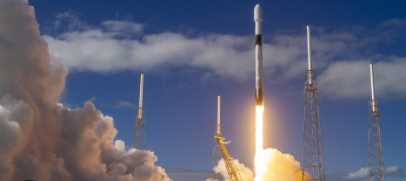Space exploration has undergone a remarkable transformation in recent years, largely driven by advancements in launch systems. The advent of reusable rockets has revolutionized the industry, paving the way for cost-effective and sustainable space missions. In this blog, we will explore the concept of next-generation space launch systems, focusing on the development of reusable rockets and the potential future advancements that lie beyond. These innovations not only enable more frequent and affordable space missions but also hold the key to expanding our presence in space and unlocking new frontiers of exploration.
Reusable Rockets: A Game-Changing Innovation
Traditionally, space launch systems were designed as expendable, meaning that rockets were discarded after a single use, resulting in substantial costs. However, the introduction of reusable rockets has transformed the landscape of space exploration. Companies like SpaceX, Blue Origin, and Rocket Lab have pioneered the development of reusable rocket technology, significantly reducing launch costs and opening up new possibilities.
Reusable rockets operate by returning their first stages back to Earth for vertical landings or controlled ocean landings. By refurbishing and refueling these rockets, they can be used for multiple missions, drastically reducing the expenses associated with building new rockets from scratch. This advancement has already resulted in a flurry of activities, with an increased number of satellite deployments, resupply missions to the International Space Station, and even plans for crewed missions to the Moon and Mars.
Future Advancements: Beyond Reusable Rockets
While reusable rockets have made remarkable strides in space launch systems, the future holds even more exciting possibilities. One such advancement is the concept of fully reusable launch systems, where not only the first stage but the entire rocket can be reused. This would further drive down costs and increase the frequency of space missions. Companies like SpaceX are actively pursuing this goal with the development of next-generation launch vehicles such as the Starship.
Beyond reusable rockets, other innovative concepts are being explored. Air-breathing propulsion systems, such as the SABRE engine developed by Reaction Engines, aim to combine the efficiency of air-breathing engines with rocket propulsion, potentially enabling reusable space planes capable of taking off from conventional runways and reaching orbit. These systems have the potential to revolutionize space transportation, making it more akin to air travel in terms of accessibility and cost.
Furthermore, advancements in materials, such as carbon nanotubes and composites, could lead to the development of lighter and stronger rocket structures. This, coupled with more efficient propulsion systems, could enhance payload capacity and reduce launch costs even further.
The Implications and Future of Next-Generation Space Launch Systems (200 words):
Next-generation space launch systems have far-reaching implications for space exploration and commercial activities. The reduced cost of access to space opens up opportunities for satellite deployments, scientific research, asteroid mining, and even space tourism. It encourages collaboration between governments, private companies, and international partners, fostering innovation and driving the growth of the space industry.
Moreover, reusable rockets and future advancements in space launch systems are instrumental in establishing sustainable human presence beyond Earth. They enable the transportation of crew and supplies to support long-duration space missions, such as those to the Moon and Mars, facilitating the development of lunar bases, Martian colonies, and deep-space exploration.
Conclusion
Next-generation space launch systems, with reusable rockets as a cornerstone, have ushered in a new era of space exploration. They have made space more accessible, cost-effective, and sustainable, driving advancements in various fields. As we look to the future, the development of fully reusable rockets, air-breathing propulsion systems, and breakthrough materials holds immense potential for expanding our presence in space.




Leave Comment